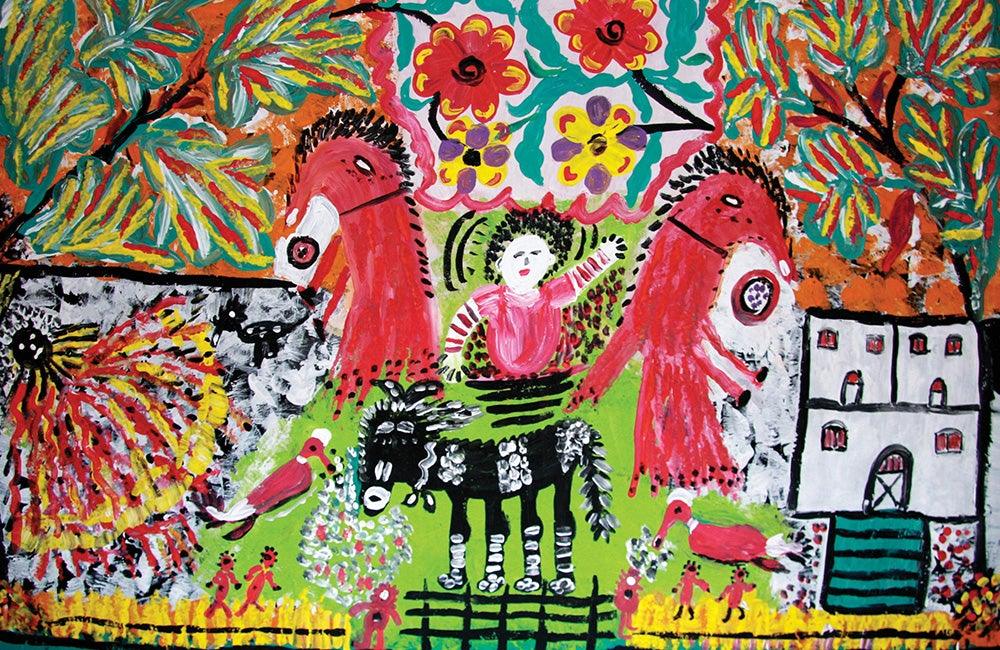First published: Fall 2011
Wooded microcosms inhabited by men and animals or characters dominating a stage-like space are the oeuvre of Maria Concetta Cassarà’s paintings. The artist lives in a working-class quarter of Bologna, in north-central Italy. After a life as a housewife, finding her children grown and therefore having more free time for herself, Cassarà engaged in various activities, first working in a pastry shop and then later on as a dressmaker.
About 10 years ago, already in her sixties, she began painting by chance after watching her granddaughter while she drew. From that moment on Cassarà dedicated almost every evening, sometimes well into the late hours, to creative accomplishment, wheeling a trolley full of sheets of paper, brushes and tempera into the living room where she sat at a table in front of the television set.

Glancing at programmes, Maria Concetta did not neglect the practice of drawing, although in truth only her images of women testify to the context of action. Often they represent figures dressed in fine evening clothes and exclusive accessories which, typical of the television presenter’s greeting, emerge to assume a frontal, central pose.
Due to the speed with which television personalities habitually move, appearing and then disappearing from the screen, Maria Concetta says that she is forced to complete such figures with details of her own imagining. As for the rest, a rural topography prevails in her representations; there are hills, valleys, plants, another artist of remarkable talent who flowers, streams, bridges and clusters of houses. These landscapes, however, are not harmonious and reassuring, but rather wild and apparently hostile territories.
The male characters are well integrated into these scenes; they look like pastors, roaming creatures, with long, shaggy hair, and bright red beards and nails. Standing before these fur-clad figures accompanied by lambs and goats, one feels the spontaneous association with the hermit saints – Saint John the Baptist, for example.
This religious reference, however, while vague, acquires depth if one considers the male figures drawn up on single sheets of paper. They are men who present the aforementioned characteristics, but who differentiate themselves by means of certain sacred attributes: a liturgical prayer book, a rosary, a monk’s cassock.
Some of these appear as busts, framed by floral motifs, like the simulacrums of saints placed in shrines, or when positioned on high columns more reminiscent of the ancient idols of pagan cults. Objects of popular devotion which therefore seem to permeate Cassarà’s imagery.
This is an article extract; read the full article in Raw Vision #73




